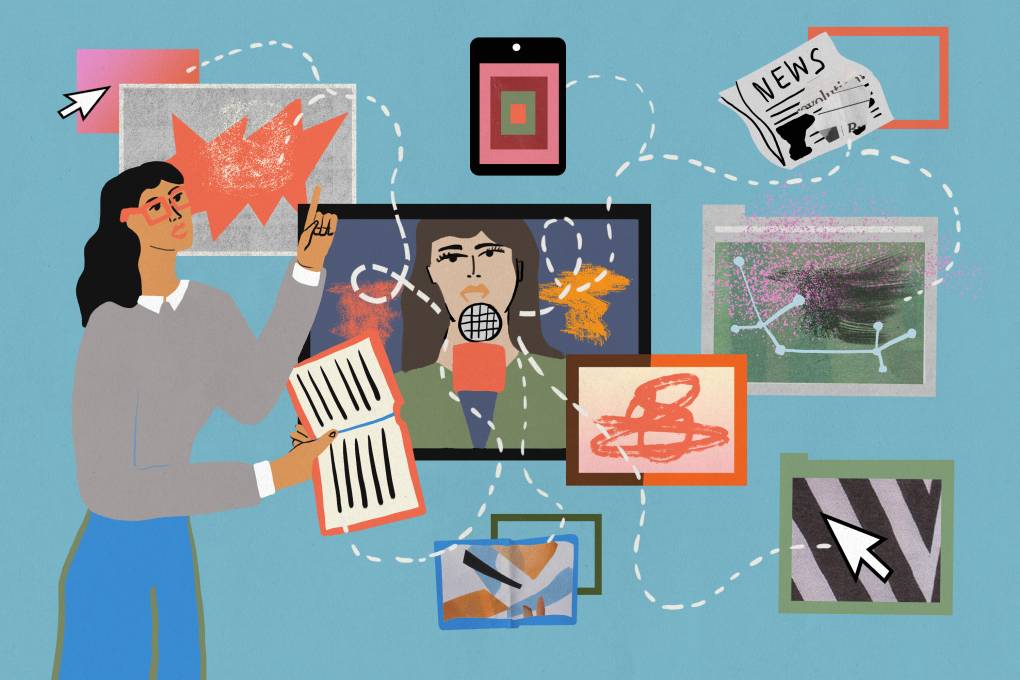
Like it or not, kids hear the news. Here’s how teachers help them understand it | KQED
With tragedies dominating the news cycle for the past few weeks, teachers are looking for ways to help their students make sense of the world around them. Even the youngest children are absorbing headlines and current events. Teachers say they need to give them tools to help them process – and filter — information. One key element of that approach is media literacy.
Even if children aren’t seeking out the news, Nichols says, they’re still exposed to it. And they have lots of questions. One student in her class asked a big one: Why? Why did the shooter do this?
She says the best course of action is to be honest with her students, telling them: “We know a lot, but we don’t always have the answers for everything. And that might be something that we never have an answer for.”
Nichols says this isn’t the first time she and her students have had tough conversations about the news.
Sometimes, even their distractions – like YouTube videos or gamers on Twitch– can expose them to the headlines. And she wants them to understand that not everything they see on the internet can be trusted.
“It’s important that we know who’s putting out things like an advertisement.” she says. “Because, you know, we don’t necessarily know if that’s a fact or opinion.”
For older students – middle and high schoolers – the media literacy discussion is more nuanced.
Wesley Hedgepeth, a high school history and government teacher in Richmond, Va., tries to bring the topic into all his classes. He uses MediaWise, an online course run through the Poynter Institute, to give his students a crash course.
He starts with the program’s quiz for students, asking things like, “Do you know what a deepfake is? Or have you ever shared something that was false? And how did you know later on?”
The students respond about their own habits and get a video in return. The videos are hosted by noted journalists like Joan Lunden or popular educators like John Green, and focus on different parts of media literacy.
For example, Green does a video on social media and misinformation: “If you’re going to live partly inside these feeds, I think it’s really important to understand both the kinds of information that are likely to be shared with you and the kinds of information you’re incentivized to share.”
The unit helps prepare Hedgepeth’s high schoolers to approach conflicts like the recent war in Gaza. The high schoolers are taught ways of evaluating news outlets for bias. In one lesson, they’re given different texts on the same event and told to identify the discrepancies.
Sometimes, teachers use media literacy as a path into a hard conversation. Hedgepeth is the president of the National Council for the Social Studies, and says that how teachers talk about something like the war in Gaza can depend on what state they teach in.
In at least 17 states, “divisive concepts” legislation now limits what teachers can talk about. Things like critical race theory, LGBTQ rights and gun violence are often hot button issues.
“Teachers feel concerned about their job,” he says. “The fact that it’s already, on its surface, divisive, some teachers are hesitant to talk about it.”
But Hedgepeth says the social studies classroom is uniquely qualified to have these discussions.
He uses topics already in the material, like the history of the Ottoman and Byzantine empires, for instance, to give context for the region. And uses that to make the jump from history to the present day.
Hedgepeth tries to get many perspectives in his lessons. He says it’s not just about one side’s history: “There are not only two sides, but multiple sides to this conflict,” he says. “I think it’s really important to connect it to what we’re learning and so they can understand the bigger picture.”
And with more sides to the story come more opportunities for students to reach their own conclusions.
9(MDAxOTAwOTE4MDEyMTkxMDAzNjczZDljZA004))
Stay connected with us on social media platform for instant update click here to join our Twitter, & Facebook
We are now on Telegram. Click here to join our channel (@TechiUpdate) and stay updated with the latest Technology headlines.
For all the latest Education News Click Here
For the latest news and updates, follow us on Google News.

